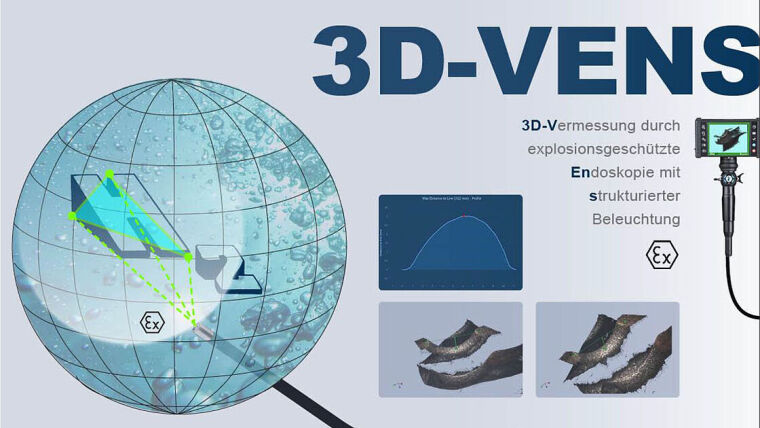
The 3DVens Consortium is funded by the BMBF with ~3 Million Euro and brings together the IAOB (AG Franke - Projectleader Dr. Andreas Stark), Fraunhofer IOF (Jena), IT Concepts GmbH (Lahnau), INGENERIC GmbH (Baesweiler), GRINTECH GmbH (Jena).
Dr. Andreas Stark (AG Franke) is also serving as the consortiums scientific coordinator.
Motivation
Extensive technological developments are required to meet social challenges such as climate neutrality, digitalization and sustainability. One prominent example is the use of hydrogen as an energy source, the safe handling and social acceptance of which requires safe testing and maintenance. However, currently available inspection systems pose a high risk due to the use of electronic components, which are themselves a source of ignition, and therefore cannot be used in the vicinity of highly explosive substances such as hydrogen.
Goals and approach
The consortium aims to develop a demonstrator that combines miniature optics, multi-core fibers, imaging fiber bundles, hybrid projection optics and a novel endoscopic 3D measurement method. Compared to the state of the art, it will be more integrated and therefore explosion-proof, as no electronic components are used in its measuring head.
Innovation and prospects
The technology presented in 3D-Vens allows access to potentially explosive measurement volumes that were previously inaccessible, without electronics in the distal end. The innovative illumination concept differs from previous approaches, is more robust against endoscope cable deformations and enables a reduced size. This opens up new areas of application, e.g. for pattern projection, 3D measurement or translational endo-microscopy for industry and medicine. There is great potential for commercial use in terms of sustainability and climate neutrality.
More Information (in German) on the page of the BMBFExternal link.